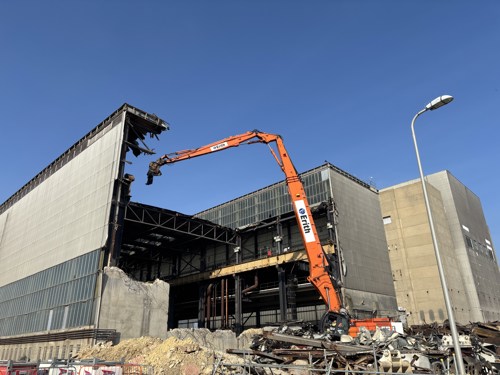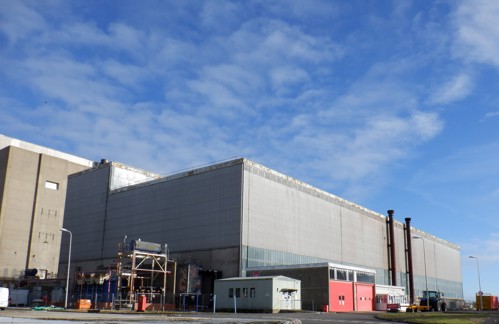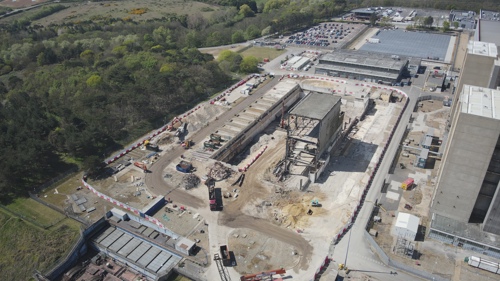The Office for Nuclear Regulation (ONR) has welcomed the end of an 18-month long project to fully demolish the turbine hall at Sizewell A nuclear power station - a landmark decommissioning milestone at the site.
The football-pitch sized hall has now been razed to the ground using a series of innovative and forward-thinking techniques which meant the completed work was achieved in a significantly quicker timeframe than if traditional decommissioning and dismantling approaches had been followed.
It is a dramatic skyline change at the Suffolk coastal site with the turbine hall a permanent and visible feature since the 1960s.
Collaborative engagement between the licensee - Nuclear Restoration Services (NRS) - and ONR has helped to secure substantial efficiency savings in time and money throughout the project, which began in the autumn of 2023.
At the same time, ONR has maintained its independent focus on safety and allowed the smooth delivery of this ground-breaking decommissioning work at Sizewell A, while protecting workers and the public.
Up to 700kgs of explosives were used last November to debilitate the four reinforced concrete turbine bases on which two 65-tonne turbogenerators stood, the largest use of explosives ever seen on British soil on a nuclear site.

Since then, high reach cranes and excavators have been used to remove rubble from the weakened turbine plinths and tear down the rest of the concrete structure until the hall was completely removed.
From the start, once satisfied with the safety evidence provided for the turbine hall demolition, ONR's inspectors permissioned key stages of the project and adopted an enabling regulatory approach throughout the work.
During the winter and into spring, inspectors maintained a presence on site, continued to review the demolition work and maintained close regulatory oversight at Sizewell A.
Andrew Bull, ONR's Nominated Site Inspector at Sizewell A, said: "We've worked very closely with NRS, adopting an enabling stance to allow the licensee to push forward with a modern, and at times, ground-breaking approach to accelerating this major dismantling project.
"ONR works hard to reduce unnecessary regulatory burden and add value when it is safe to do so. This has been no better demonstrated than for the removal of the Sizewell A turbine hall, where we have played a key role in this example of decommissioning the UK's nuclear estate.
"We've been pleased to work with NRS in a constructive manner to regulate the ongoing clean-up of this important site - safely, securely and cost effectively."


A total of 11,000 tonnes of metal were removed during the demolition and de-planting process, the vast majority of which will be recycled and sold on, the money set to be used to offset future decommissioning work.
About 35 miles of cable has also been removed and more than 17,000 tonnes of concrete and rubble removed from the turbine hall, fire station and electrical annexe structures. It will be crushed, processed and reused for ongoing construction projects.
The empty land that now lies where the flattened turbine hall once stood will eventually be restored and released for re-use.
The twin reactors at Sizewell A were shut down on at the end of 2006 after 40 years of electricity generation. Ambitions remain for the whole site to be completely cleared by 2077.
Alan Walker, Sizewell A site director, said: "This is an incredible achievement for NRS, our contract partners Erith, the Office for Nuclear Regulation (ONR) and the Nuclear Decommissioning Authority (NDA).
“This was not a routine project – it was a remarkable endeavour that required a lot of hard work, dedication and ingenuity.
“I would like to thank everyone involved: the site and Erith teams, our neighbours for their continued support throughout and the ONR for enabling us to push the boundaries of innovation in conventional demolition together.
"The learning from this can be applied to other NRS projects to continue delivering efficient, value for money decommissioning and restoration of nuclear sites.”